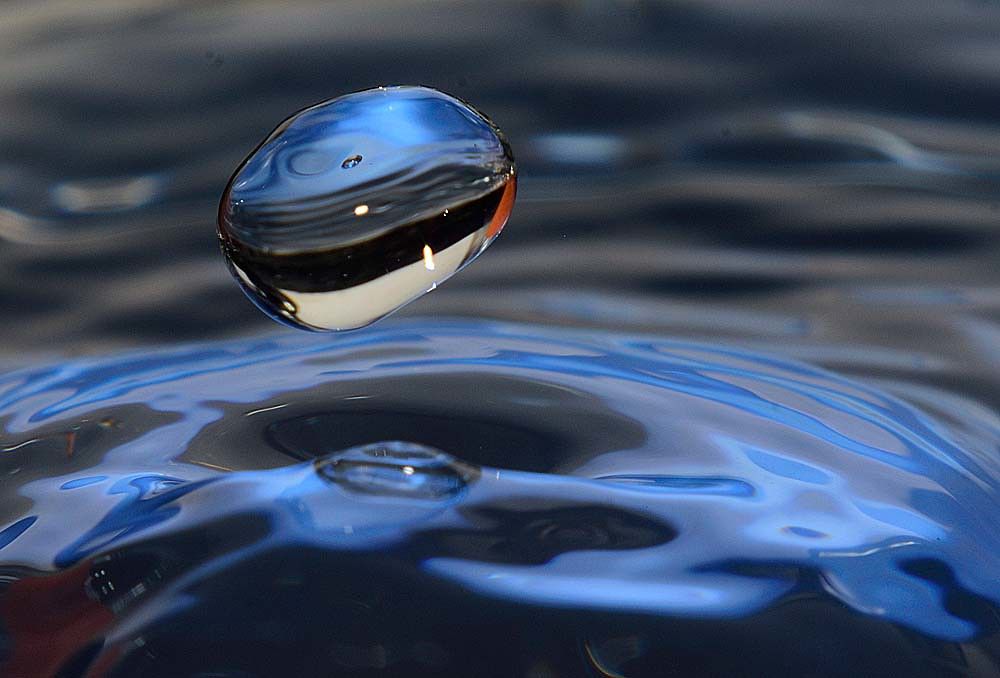Water molecules attract each other. The molecules at the surface of a body of water make a film under tension. That film is strong enough to support a needle or a small insect like a water strider. Surface tension also pulls water into round droplets.
Here's another demonstration of the reality of the surface tension of water. You need a clean dinner plate, some talcum powder, and a bar of soap. Rinse the plate thoroughly to get rid of any grease or soap. Fill the plate with water and sprinkle a trace of talcum powder on the surface.
Now take a bar of soap and touch one corner of it to the water surface near the edge of the plate. The talcum powder will be pulled suddenly to the opposite side of the plate.
The talcum powder doesn't dissolve in the water, and it doesn't sink; it lies on the water surface, supported by surface tension.
The effect of the soap is to break that film of surface tension. At the place where soap touches water, molecules of water attract molecules of soap rather than each other. Meanwhile on the other side of the plate, water molecules still attract each other. It's like cutting a stretched rubber band. The surface tension on the far edge of the plate pulls the talcum powder away from the soap.
Once again, in case you missed it: fill a clean dinner plate with water; sprinkle a little talcum powder on the water surface; touch one edge of the water with a piece of soap; watch the talcum powder suddenly pull away from the soap --- an impressive demonstration of the tiny forces between water molecules.










